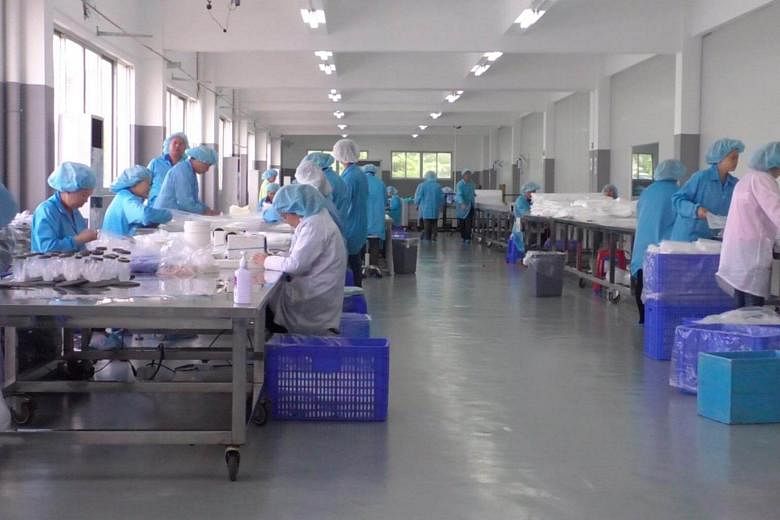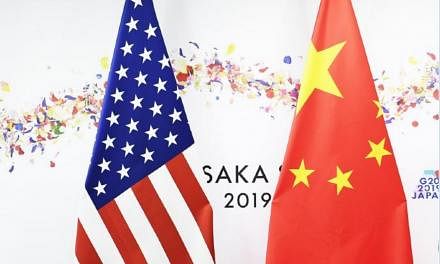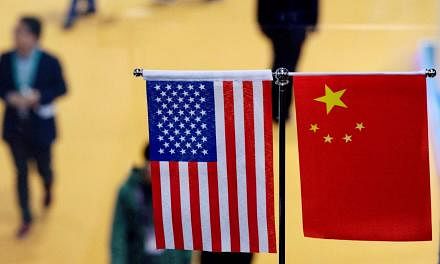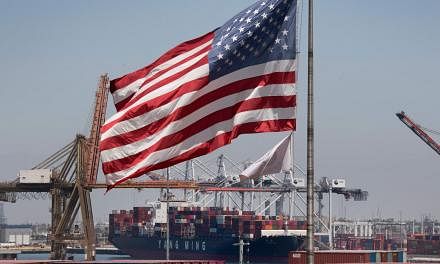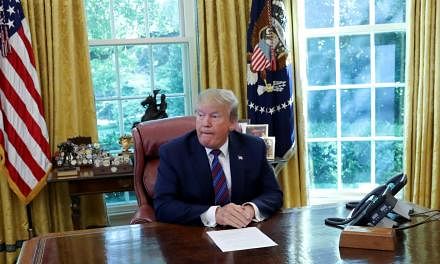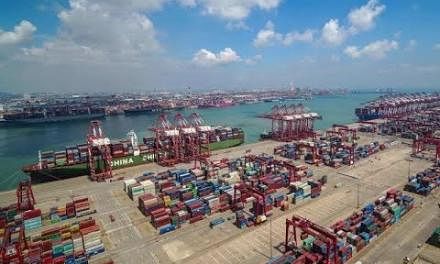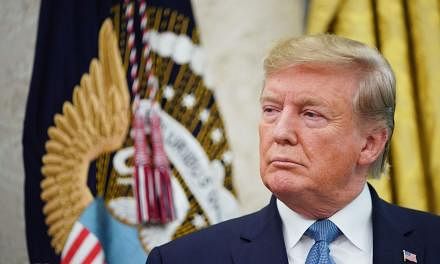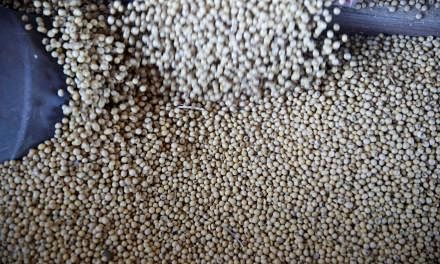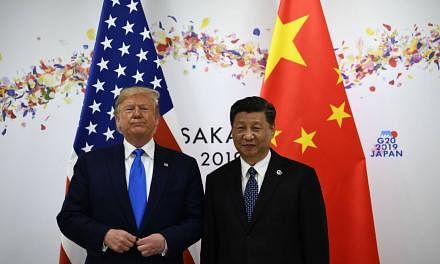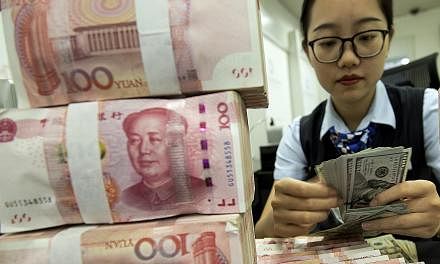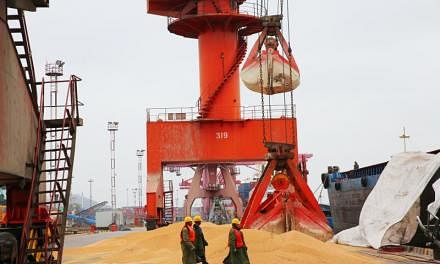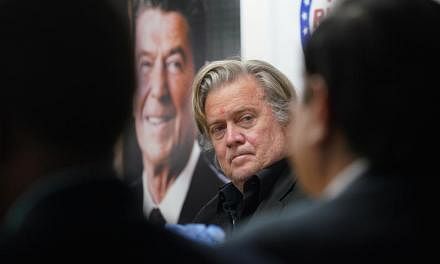WASHINGTON (NYTIMES) - For more than a year, the Chinese government has withheld lab samples of a rapidly evolving influenza virus from the United States - specimens needed to develop vaccines and treatments, according to federal health officials.
Despite persistent requests from government officials and research institutions, China has not provided samples of the dangerous virus, a type of bird flu called H7N9. In the past, such exchanges have been mostly routine under rules established by the World Health Organisation (WHO).
Now, as the US and China spar over trade, some scientists worry that the vital exchange of medical supplies and information could slow, hampering preparedness for the next biological threat.
The scenario is "unlike shortages in aluminium and soybeans", said Dr Michael Callahan, an infectious disease specialist at Harvard Medical School.
"Jeopardising US access to foreign pathogens and therapies to counter them undermines our nation's ability to protect against infections which can spread globally within days."
Experts concur that the world's next global pandemic likely will come from a repeat offender: the flu. The H7N9 virus is one candidate.
Since taking root in China in 2013, the virus has spread through poultry farms, evolving into a highly pathogenic strain that can infect humans. It has killed 40 per cent of its victims.
If this strain were to become highly contagious among humans, seasonal flu vaccines would provide little to no protection. Americans have virtually no immunity.
"Pandemic influenza spreads faster than anything else," said Dr Rick Bright, the director of Biomedical Advanced Research and Development Authority, an agency within the Department of Health and Human Services that oversees vaccine development. "There's nothing to hold it back or slow it down. Every minute counts."
Under an agreement established by the WHO, participating countries must transfer influenza samples with pandemic potential to designated research centres "in a timely manner".
That process - involving paperwork, approval through several agencies and a licensed carrier - normally takes several months, according to Dr Larry Kerr, the director of pandemics and emerging threats at the Department of Health and Human Services.
But more than one year after a devastating wave of H7N9 infections in Asia - 766 cases were reported, almost all in China - the Centres for Disease Control and Prevention is still waiting for several viral samples, the National Security Council and the WHO confirmed.
Scientists at the Department of Agriculture have had such difficulty obtaining flu samples from China that they have stopped requesting them altogether, according to a government official who spoke anonymously because he was not authorised to discuss the matter.
At least four research institutions have relied upon a small group of H7N9 samples from cases in Taiwan and Hong Kong. (All four asked not to be identified for fear of further straining ties.) The Chinese Embassy in Washington did not respond to multiple requests for comment. The Chinese Centre For Disease Control and Prevention also did not reply to inquiries regarding the transfer.
When the H7N9 virus first appeared in China, researchers say the Chinese government provided timely information. But communication has gradually worsened.
Yet a sudden spike in infections during the 2016-2017 outbreak wave demands intense research, said scientists aiming to understand the virus' evolution.
Recent trade tensions could worsen the problem.
The Office of the US Trade Representative in April released a proposed list of products to be targeted for tariffs - including pharmaceutical products such as vaccines, medicines and medical devices.
So far, none of those medical products have landed on the final tariff lists. But lower-level trade negotiations with China concluded last Thursday (Aug 23) with few signs of progress, increasing the likelihood of additional tariffs.
The US relies on China not only for H7N9 influenza samples but also for medical supplies, such as plastic drip mechanisms for intravenous saline, as well as ingredients for certain oncology and anaesthesia drugs. Some of these are delivered through a just-in-time production model; there are no stockpiles, which could prove dangerous if the supply was disrupted, health officials said.
Scientists believe top commerce officials in both governments view the viral samples much like any other laboratory product, and may be unfamiliar with their vital role in global security.
"Countries don't own their viral samples any more than they own the birds in their skies," said Mr Andrew Weber, who oversaw biological defence programmes at the Pentagon during the Obama administration.
"Given that this flu virus is a potential threat to humanity, not sharing it immediately with the global network of WHO laboratories like CDC is scandalous. Many could die needlessly if China denies international access to samples."
For more than a decade, epidemiological data and samples have been used as trade war pawns.
China hid the 2002 outbreak of severe acute respiratory syndrome, or Sars, for four months and then kept the findings of its research private. Some provinces withheld information about cases even from the central government in Beijing.
In 2005, Chinese authorities insisted an H5N1 influenza outbreak was contained, contradicting University of Hong Kong scientists who offered evidence that it was expanding. Those authorities hesitated to share viral samples from infected wild birds with the international community, concealing the scope to avoid a hit to their vast poultry industry.
Indonesia followed suit, refusing in 2007 to share specimens of H5N1 with the US and United Kingdom, arguing that the countries would use the samples to develop a vaccine that Indonesians could not afford.
Those episodes led to the 2011 development of the WHO's Pandemic Influenza Preparedness Framework, which aims to promote sample exchanges as well as developing countries' access to vaccines.
But for countries like China, bearing the burden of a novel virus is paradoxical. Outbreaks are expensive - the wave of H7N9 infections in 2013 alone cost China more than US$6 billion (S$8.2 billion), according to the United Nations - but they can provide a headstart in developing valuable treatments.
"In a sense, China has made lemonade from lemons - converting the problem of global infectious disease threats into lifesaving and valuable commodities," Dr Callahan said.
And now, as the H7N9 virus evolves, US authorities worry that the Chinese have obfuscated the scale and features of this outbreak.
The Chinese government has refused to share clinical data from infected patients, according to scientists, and claims to have all but eradicated H7N9 through a single poultry vaccination campaign.
"Influenza is going to do what it does best, which is mutate," Dr Kerr said.
